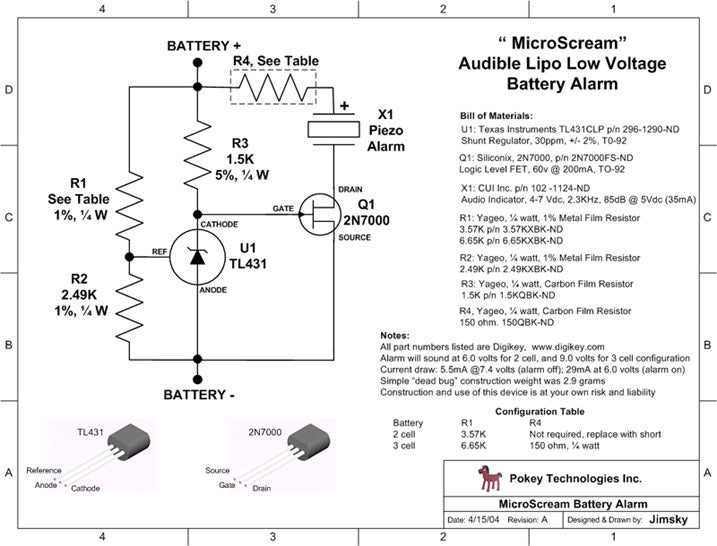rhd
0
- Joined
- Dec 7, 2010
- Messages
- 8,475
- Points
- 0
Here's an interesting task I need to tackle. As part of a gift, I'm creating a (very heavy) battery pack (actually multiple packs) that can be used for a wilderness 12V power source.
I have about a hundred 18650 cells that were harvested from various laptop packs - all of which known to be decent. The 18650s already went through two stages of "weeding out", and what I have now are just the "good" cells that will charge up to full voltage, and seem to discharge fairly appropriately.
The pack I'm designing uses a whole bunch of 4S1P holders, that have safety protection PCBs built-in. So I don't need to worry about that portion.
However, what I DO need to think about, is how best to group the cells into packs of 4 that have similar characteristics. If I don't, and one of the four cells has a lower capacity, it will hit below the cutoff voltage sooner, and trigger the pack's protection mechanism to shut off before the other 3 cells have been allowed to give us all of their energy.
What doesn't matter, is consistency between packs. If one pack has, as a whole, 50% more capacity than another, that doesn't matter. The packs themselves are used one-by-one.
Challenge:
- What is the best way to "capacity-bin" 18650s?
The Labour-Intensive Approach:
- Would be to attach each cell to a known load, while attached to a voltmeter, and track the time it takes to drop below some Voltage figure.
But this approach is of course time consuming for a hundred or so cells. I'm thinking that there either must be a better way, or there must be a gizmo / gadget that could be purchased for the purpose of binning batteries?
One of my ideas would be to see if there was a really simple device I could make from passive components that would basically keep an LED lit until it dropped below, say, exactly 3V. Then I could make up like 20 of them (if they really were simple/cheap). Then I could attach one to each of 20 cells, and then just glance over every few minutes. As soon as 4 LEDs were off, I'd group those 4 cells. Then the next 4 to turn off, etc. I don't actually need numerical data, I just need to be able to group the cells.
I have about a hundred 18650 cells that were harvested from various laptop packs - all of which known to be decent. The 18650s already went through two stages of "weeding out", and what I have now are just the "good" cells that will charge up to full voltage, and seem to discharge fairly appropriately.
The pack I'm designing uses a whole bunch of 4S1P holders, that have safety protection PCBs built-in. So I don't need to worry about that portion.
However, what I DO need to think about, is how best to group the cells into packs of 4 that have similar characteristics. If I don't, and one of the four cells has a lower capacity, it will hit below the cutoff voltage sooner, and trigger the pack's protection mechanism to shut off before the other 3 cells have been allowed to give us all of their energy.
What doesn't matter, is consistency between packs. If one pack has, as a whole, 50% more capacity than another, that doesn't matter. The packs themselves are used one-by-one.
Challenge:
- What is the best way to "capacity-bin" 18650s?
The Labour-Intensive Approach:
- Would be to attach each cell to a known load, while attached to a voltmeter, and track the time it takes to drop below some Voltage figure.
But this approach is of course time consuming for a hundred or so cells. I'm thinking that there either must be a better way, or there must be a gizmo / gadget that could be purchased for the purpose of binning batteries?
One of my ideas would be to see if there was a really simple device I could make from passive components that would basically keep an LED lit until it dropped below, say, exactly 3V. Then I could make up like 20 of them (if they really were simple/cheap). Then I could attach one to each of 20 cells, and then just glance over every few minutes. As soon as 4 LEDs were off, I'd group those 4 cells. Then the next 4 to turn off, etc. I don't actually need numerical data, I just need to be able to group the cells.
Last edited:






